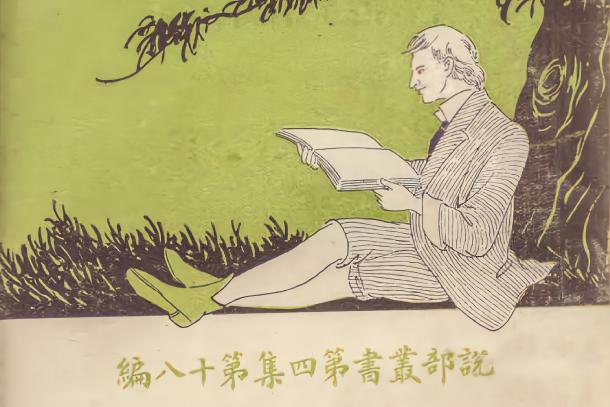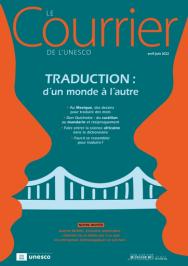Article
Don Quixote: From Castilian Spanish to Mandarin and back again

Xin Hongjuan
Professor at the Faculty of Foreign Languages of Ningbo University, Xin Hongjuan specializes in translation studies and comparative literature, particularly focusing on world translation history.
In its four centuries of existence, Spanish writer Miguel de Cervantes’ Don Quixote has become one of the most read, translated and analyzed books in the world. With its experimental form and literary playfulness, it has been hailed as foundational in modern literature. It invites readers to follow Spanish gentleman Don Quixote who, fed by his own delusional fantasies, turns knight errant. In the company of his faithful squire, Sancho Panza, he embarks on picaresque adventures in seventeenth-century Spain, leaving behind them a legacy of humor, romance and sadness.
Don Quixote was not translated into Chinese until three centuries after its publication in Spain
Originally published in two volumes in 1605 and in 1615, the first version of this Spanish classic was not translated into Chinese until three centuries later. In 1922, Fujianese translator and writer Lin Shu’s (1852-1924) translation was published under the title Moxia Zhuan (History of the Enchanted Knight). What makes this translation particularly remarkable, however, is that Lin did not speak or read Spanish. As a matter of fact, Lin did not know any western languages at all.
A Confucian Don Quixote
It was with the help of his assistant, Chen Jialin, that Lin was introduced to the hidalgo’s adventures as they appeared in three different versions in English. According to research done by experts on Cervantes, Lin’s translation was probably based on English author and translator Pierre Motteux’s version published in 1885. However, Lin interspersed his version of the tale with invented dialogue and shortened it by many chapters, including the book’s famed prologue, making it a ‘transcreation’ – a reimagined version resonating better with another culture – rather than a translation.
Moxia Zhuan is a ‘transcreation’ rather than a translation
Not only did Lin reinvent scenes and adopt popular Spanish expressions into chengyu, a type of traditional Chinese idiomatic expression, he also changed the characters. In his version, Don Quixote becomes more learned than crazy; his squire, Sancho Panza, is turned into his disciple; his fair maiden, Dulcinea, becomes ‘Jade Lady’; his old, half-starved horse, Rocinante, is promoted to a ‘fast horse’, and all references to God are removed. With Lin’s magical spell of writing the story is thus recast as “less crazy, more romantic”, as sinologist and translator, Alicia Relinque, Professor of classical Chinese literature in the University of Granada, has put it, as Don Quixote is turned into a romantic hero more familiar to readers of Chinese literature.
The differences between the original and Lin’s version go beyond shape and form, however. By interweaving grace and sagacity along with Confucian values and local sayings into Cervantes’ wit, Lin tinged Don Quixote with even more Chinese nuances. For example, the chivalrous hero turned Confucian scholar endorses traditional values, such as filial piety and respect for the past, and by turning his squire into a disciple, he transformed their master-servant relationship into one of teacher and disciple, following the Confucian tradition of veneration for masters.
‘The Enchanted Knight’ back to La Mancha
In Lin’s time, China had been forcibly opened to the outside world. In this context, Lin wished for his translations of literary works to serve as eye-openers to the general public. Despite its additions, deletions, distortions and even misrepresentations, his History of the Enchanted Knight, with extensive commentary and interpretive observations, became appreciated among Chinese intellectuals. It earned the praise of leading writers, such as Mao Dun and Zheng Zhenduo, and the renowned twentieth-century literary scholar and writer Qian Zhongshu once stated that it was the more conspicuous elements in the willful misrepresentations that more or less prevented Lin’s translations from being totally relegated.
From the standpoint of rhetoric and writing, Lin’s reinterpretation of Cervantes’ Don Quixote did indeed have an eye-opening effect. However, although it did earn praise, it was also widely criticized and accused of being a mistranslation omitting key aspects of the original version. When more faithful versions later appeared, Lin’s peculiar version seemed to be long forgotten in the field of Chinese literary translation.
In 2013, when Inma González Puy, Director of the Cervantes Institute in Shanghai, discovered Lin’s version of Don Quixote, she initiated the idea of rescuing the forgotten text and translating it back into Spanish. With the help of Relinque, she wanted to catch a glimpse of how Don Quixote’s image was accepted in China a century ago. On the eve of the 405th anniversary of Cervantes’ death, Relinque’s translation, Historia del Caballero Encantado, was finally published – including more than 650 footnotes carrying information on curious aspects that may bring the readers a better understanding of China and Chinese culture.
Relinque’s dual edition of History of the Enchanted Knight has been heralded as a fulfillment of Don Quixote’s century-long homecoming journey and a hybridized literary landscape in the history of literature. For Relinque, it serves as a “perfect example of how literature has traveled from one country to another”. In fact, Lin’s version of Don Quixote is far from being the sole example of transcreation in the history of translation. Other examples include widely accepted misrepresentations in Chinese poet Hans-shan’s work, as well as the classical script Tao Te Ching, to name a few. While never impeded, such transcreations – such movement into a new environment – enriches cultural and intellectual life across the world.
What is the UNESCO Collection of Representative Works?
Between 1948 and 2005, this UNESCO programme focused on translating masterpieces of world literature, mainly from lesser known languages into more widely spoken ones, but also vice versa. In 2005, the catalogue consisted of 1,060 different works, ranging from Je suis un chat by Japanese novelist Natsume Sôseki (from Japanese into French), and Aus dem Diwan by Persian poet and prose writer Saadi (from Persian into German) to Hamlet by English playwright Shakespeare (from English into Indonesian).



